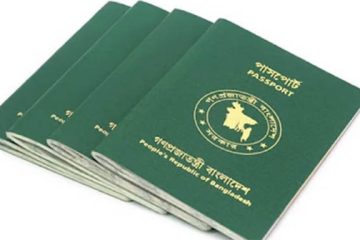Reveals survey
People now live longer than in the past.
Life expectancy in the country rose to 70.4 years in 2013 from 69.4 a year ago, says a new survey of Bangladesh Bureau of Statistics (BBS).
It was 65.2 years in 2005, according to the Sample Vital Registration System 2009-2013 released yesterday.
This progress reflects an overall improvement in the living standards, thanks to steady economic growth, and increased income, education and health awareness.
“This is the compound effect of a number of factors, including rising health consciousness and increased availability of healthcare facilities in the country,” said Prof AKM Nurun Nabi, vice chancellor of Begum Rokeya University in Rangpur.
“The level of poverty has declined over time while income and education standard have risen. As a whole, people’s living standard has improved,” said the population expert.
The BBS study has also found that with the increase in life expectancy, birth and death rates have declined over time.
The death rate fell to 5.3 per 1,000 people in 2013 from 5.8 in 2005.
While 68 children per 1,000 live births would die under the age of five in 2005, the rate dropped to 41 in 2013.
Maternal mortality rate came down to 1.97 per 1,000 live births in 2013 from 3.48 in 2005.
“People are more conscious now. In the past, a mother would give births to many children. This trend has declined, leading to a fall in the deaths of pregnant mothers,” said Prof Nabi.
The BBS also finds the Total Fertility Rate (TFR) among women, aged between 15 and 49, is declining. On an average, a woman in 2013 had 2.12 children, down from 2.46 in 2005.
Zaid Bakht, research director of Bangladesh Institute of Development Studies (BIDS), said the government’s immunisation programme had an impact on the increased life expectancy.
Steady economic growth spurred employment and income, enabling people to afford more quality food now. Besides, people now have access to better healthcare services due to different initiatives by the government and the NGOs, he said.
PLANNING AHEAD
However, rising life expectancy warrants urgent policy planning by the state, as the number of elderly people, now 1.15 crore, will rise.
By 2050, people above 60 are projected to constitute 20 percent of the total population, Prof Nabi said.
“They will need proper healthcare facilities and treatment. So, policymakers should start planning now for ensuring those services at that time,” he said.
The increased life expectancy and declining death rate also increases population.
Despite the decrease in birth rate, population grows by 1.37 percent a year, the BBS says.
Population density per square kilometre rose to 1,049 in 2013 from 939 in 2005, the study finds.
MA Mannan, senior research fellow of the BIDS, said the increased population density will cut availability of agricultural land.
“Like China’s one-child policy, we should adopt a two-children policy to check population growth.
“Many can argue that they have the rights to take as many children as they want if they can afford. But they should keep in mind that the resources needed to support those children are limited.”
Mannan also suggested the government strengthen motivational campaigns for population control and provide incentives for planned housing in rural areas to save farmlands.
-With The Daily Star input




















